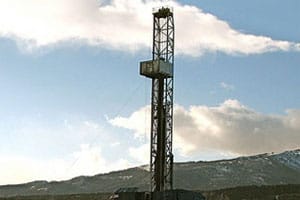
A new study revealed that benzene and other pollutants were found in the air at seven natural gas drilling sites in three West Virginia counties. The study was conducted by West Virginia University Public School of Health chairman Michael McCawley who said he found high levels of benzene at the Maury pad in Wetzel County […]
 A new study revealed that benzene and other pollutants were found in the air at seven natural gas drilling sites in three West Virginia counties.
A new study revealed that benzene and other pollutants were found in the air at seven natural gas drilling sites in three West Virginia counties.
The study was conducted by West Virginia University Public School of Health chairman Michael McCawley who said he found high levels of benzene at the Maury pad in Wetzel County that were of most concern, according to the Associated Press (AP). The study was conducted for the state Department of Environmental Protection (DEP). “Air and light emissions, dust and noise levels, and airborne radiation levels” were examined at drilling sites in Wetzel, Brooke, and Marion counties, the AP wrote.
Hydraulic fracturing—fracking—has long been associated with fears of water supply contamination. Fracking drilling for natural gas involves injecting tons of silica sand, a massive mix of more than 600 chemicals, and water underground via a drill into a concrete well that extends to an underground bed of shale rock. When this combination reaches the rock, it is blasted apart and natural gas is released and supposed to be returned to the surface and captured.
Critics have long argued that this drilling devastates the environment and contaminates groundwater, underground water aquifers, and nearby and widespread fresh water supplies. Either through the fault of shoddy wells, poorly trained well workers, or through a questionable drilling process altogether, natural gas and the contents of the drilling fluid may be released underground through cracks in the wells or the fractures created by the drilling. This, many area residents closest to wells believe, has led to a contamination of water supplies, in some cases rendering water completely contaminated.
With natural gas production up 30 percent since 2005, these concerns are gaining traction. In fact, a U.S. Environmental Protection Agency (EPA) review of well safety is in progress and scheduled for release in 2014.
As gas drilling has expanded and thousands of wells have been opened in just the last few years, residents from New York, Pennsylvania, Ohio, Maryland, West Virginia, and New Jersey have raised concerns over the safety of drilling. While some believe drilling is an answer to a down-turned economy and energy dependence, more believe drilling is putting the fresh water supplies for millions of people at risk, with the risk greatest for those living closest to the drilling boom.
We also previously wrote that environmental researchers said they discovered greenhouse gases at excessive levels near Australia’s largest coal seam gas field, which is associated with fracking. The discovery prompted calls to stop expansion of fracking there until researchers can understand if the practice is contributing to climate change. The report revealed methane, carbon dioxide, and other compounds at an excess of three times normal background levels.
One of the more dangerous fracking issues may be that from silica sand, which is used in the millions of pounds at fracking sites in the United States, In fact, the Natural Resources Defense Council (NRDC) believes silica sand becoming airborne is putting thousands of well workers and those living downwind of an active well at serious risk of health problems. At least 4 million pounds of silica sand are used at a typical, active fracking well. Ingesting too much silica sand can lead to silicosis, a dangerous and irreversible health complication that is marked by breathing trouble. The disease gets progressively worse and only preventative measures can be taken to avoid it altogether.


